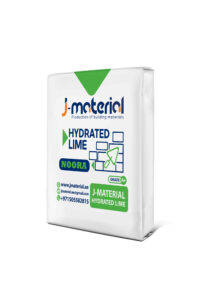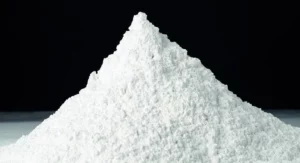Hydrated lime, also known as calcium hydroxide, is a crucial material in the construction industry. Known for its white, powdery appearance and versatile properties, hydrated lime is produced by adding water to quicklime (calcium oxide). This simple process transforms quicklime into a stable compound that plays an essential role in various construction applications. In this blog post, we will explore the many uses of hydrated lime in construction and discuss its benefits.

What is Hydrated Lime?
Hydrated lime, or calcium hydroxide (Ca(OH)₂), is a fine, dry powder produced by reacting quicklime (calcium oxide) with water. This material has been used for thousands of years in construction, thanks to its ability to improve the workability, durability, and overall quality of building materials. It is non-toxic, easy to handle, and environmentally friendly, making it an ideal choice for a wide range of construction projects.
Key Uses of Hydrated Lime in Construction
- Mortar and PlasterOne of the primary uses of hydrated lime in construction is in the production of mortar and plaster. When mixed with sand and water, hydrated lime improves the workability of mortar, making it easier to apply. It also enhances the flexibility and adhesive properties of the mortar, which helps prevent cracking over time. In plaster, hydrated lime contributes to a smooth, durable finish that resists shrinking and cracking as it dries.
- Soil StabilizationHydrated lime is widely used in soil stabilization, particularly in road construction and foundation work. When added to soil, it reacts with clay minerals to create a more stable, solid mass. This process improves the soil’s load-bearing capacity, reduces moisture content, and increases resistance to erosion. As a result, the ground becomes more suitable for construction, providing a stable base for roads, buildings, and other structures.
- Water TreatmentIn addition to its structural applications, hydrated lime is also used in water treatment processes within construction sites. It is effective at neutralizing acidic water, removing impurities, and reducing hardness in water supplies. This makes it a valuable tool for managing water quality during construction projects, ensuring that water used on-site meets environmental and safety standards.
- Acid NeutralizationHydrated lime’s alkaline properties make it an excellent choice for neutralizing acidic conditions. In construction, it is often used to treat acidic soils, industrial waste, and other materials that could potentially harm the environment. By neutralizing these acids, hydrated lime helps prevent environmental damage and ensures that construction activities do not negatively impact surrounding ecosystems.
- Air Lime in MasonryHydrated lime is used as an “air lime” in masonry, a term that refers to its ability to set and harden through the absorption of carbon dioxide from the air. This makes it a critical component in historic building restoration, where maintaining the breathability and flexibility of original masonry is essential. It allows for the natural movement of moisture, reducing the risk of trapped moisture that can lead to damage.
- Concrete EnhancementWhile hydrated lime is not a direct component of modern concrete, it is often added to concrete mixes to enhance specific properties. It can improve the plasticity and water retention of fresh concrete, leading to a more workable mix. In addition, the inclusion of hydrated lime can increase the durability and strength of hardened concrete, making it more resistant to weathering and chemical attack.

Benefits of Using Hydrated Lime in Construction
- Improved Workability: Hydrated lime makes mortars and plasters easier to work with, leading to smoother applications and better results.
- Enhanced Durability: Structures built with materials containing hydrated lime are more resistant to cracking, shrinking, and environmental wear.
- Sustainability: Hydrated lime is a natural, non-toxic material that can be produced with a relatively low carbon footprint, making it a sustainable choice for construction.
- Versatility: From soil stabilization to water treatment, hydrated lime’s wide range of applications makes it an invaluable material in construction.
- Environmental Protection: Its ability to neutralize acids and purify water helps protect the environment from potential construction-related damage.
Hydrated lime is a versatile and valuable material in the construction industry, offering numerous benefits across a variety of applications. Whether it’s enhancing the workability of mortar, stabilizing soil, or treating water, hydrated lime plays a crucial role in ensuring the success and longevity of construction projects. Its natural properties, combined with its environmental benefits, make it an indispensable material for modern construction.
As construction practices continue to evolve, the importance of hydrated lime in creating durable, sustainable, and resilient structures will remain significant. By understanding its uses and advantages, construction professionals can better utilize hydrated lime to achieve superior results in their projects.

